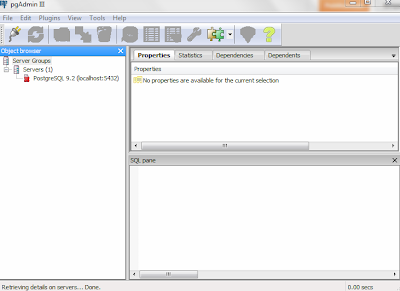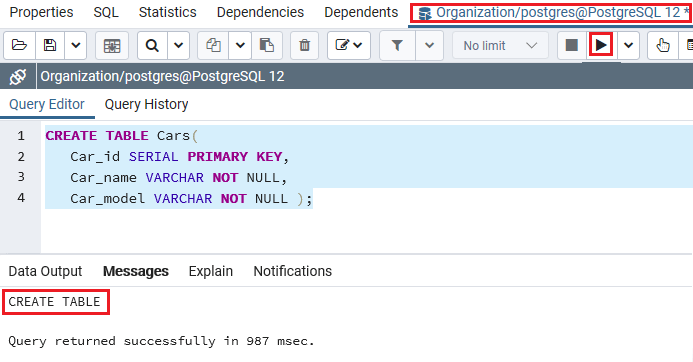

From the menu, select Custom, then select the newly created generator.

#POSTGRESQL MOCK DATA GENERATOR GENERATOR#
Fake Data Generator for Postgres Description This extension is a wrapper around the Python Faker library Released By daamien License PostgreSQL Resources. In a text file or a text block, press Alt+Insert. PostgreSQLFaker 0.1.0 This Release PostgreSQLFaker 0.1.0 Date Status Stable Latest Stable PostgreSQLFaker 0.5.3. For example, if a single entry generated by the expression is a JSON object, these settings will combine such objects into a higher level structure (for instance, an array). Table Structure: Export Format: Generated rows: Use an existing data model and customize it to mimick your table structure or create one from scratch. Generate test data for your database Quick recipes to test real applications with random data. These will apply to each expression result, when multiple entries are generated. The data generator makes getting random fake data to test your application very easy. Within the expression, you can use any of the predefined variables as well as custom dictionaries and regular expressions that have been assigned a variable name. It will be used to generate individual entries. Once you have one, you can skip the configuration step.Īdd a new generator, give it a name, and select Multiple for the type.
#POSTGRESQL MOCK DATA GENERATOR FULL#
The steps below cover the full procedure that includes creating a template. In order to generate multiple entries, you have to create a custom template. The Test Data plugin allows you to create a custom generator that handles bulk data generation and custom formats. If you need to generate multiple entries in a specific format, that's also possible. You can use them to generate literals just like with the predefined generators. The user can generate random data (or mock data) for tables. Otherwise, you may leave this field blank.Īfter you have specified a custom dictionary or a regex, they appear in the Generate menu under Custom. DBeaver is a universal database management tool, able to support SQL (MySQL, MariaDB. You can later use this name to refer to this dictionary. If you want to use this regex in a complex generator, for example to generate massive amounts of data in an arbitrary format, specify the Variable name. Lets create an employee table with id, name and salary columns and load some data, Create a dummy table CREATE TABLE public.employee ( id int8 NOT NULL, name varchar (120) NOT NULL, salary int8 NOT NULL, CONSTRAINT emppk PRIMARY KEY (id) ) Generate dummy data. You can preview an example of the generator output in the Result tab. Specify a regex for test data generationĪdd a new generator, give it a name, and select Regex for the type.Įnter the regular expression in the Expression field. To use them, you have to create a regex-based generator. The Test Data plugin also supports regular expressions. Otherwise, you may leave this field blank.

If you want to use this dictionary in a complex generator, for example to generate massive amounts of data in an arbitrary format, specify the Variable name. Specify the dictionary entries in the Expression field. From the menu, select Custom, then Configure Custom Data Generators.Īdd a new generator, give it a name, and select Dictionary for the type. In addition to predefined dictionaries, you can use a custom one. Simple method to generate random data is to use random () and generateseries. The generated literal appears at the caret.įrom the menu, select the type of data that you want to generate. 1 Answer Sorted by: 20 The most roboust method is to use specific tools like SQL Data Generator. Place the caret where you want to generate a literal and press Alt+Insert. To use the tools covered in this section, make sure that the Test Data plugin is installed and enabled. You can quickly insert a single entry or use more advanced options to generate massive files in CSV, JSON, or any other custom format. This might be names, dates, email addresses, hostnames and so on. INSERT INTO dbo.Some tests rely on test data, and IntelliJ IDEA can generate this data for you. This allows us to pick precisely two "categories" for each "user": WITH rs AS Since you already have data in the Users and Categories tables, you can use a CTE with the ROW_NUMBER windowing function partitioned by UserID and ordered by an essentially random value, NEWID(). PRIMARY KEY CLUSTERED (UserID, CategoryID) Notice there is a primary key clustered index on (UserID, CategoryID) this ensures each row is unique: CREATE TABLE dbo.XREFUserCategoriesĬONSTRAINT FK_XREFUserCategories_CategoryID

This is my version of the cross-reference table where you'll store users and the categories they are members of.


 0 kommentar(er)
0 kommentar(er)
